Anne Whitaker's Blog, page 4
June 7, 2024
Do I still exist? Yes – as far as I know…
‘…All of the remarks here are 14 years old, so I don’t know if you still exist… I was in effect asked that headline question today, via this morning’s comment on an archived blog post from July 2008. Rather apt, Saturn’s currently being opposite where he was when I set up Writing from the Twelfth House in May 2008. I do not know who Fhyre Phoenix is, but their question certainly jolted me. One, because I am the only other person who has ever asked me that question! ( …and not infrequently, to be honest: see answer above…). Two, because I was so moved by the life circumstances implied by the comment, and by the writer’s eloquence:
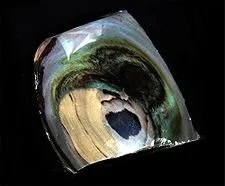
…I read this Toltec quote at my younger brother’s wake fifteen years go. It will be read again at my younger sister’s wake this summer. I intent to read it as a part of my tribute to each of my remaining four siblings at their wakes, or until it is me who is lain to rest. While a somber ritual, it is a reaffirmation to life that we will celebrate, and sing, and dance, and love, and all the rest of it, as the purpose of life it to live it, completely and beautifully. Yes, with memories; and with the dreams and celebrations, work and effort we need to put forth as we create the future as well…’ (Fhyre Phoenix)
Here is the conclusion to the post I wrote then, followed by the full post featuring that wonderful Aztec prayer. Fourteen years later, I feel just the same – in fact even more so, given the painful, divided, increasingly dangerous world in which we are currently living. It also makes me very happy to realise that the friendships I mentioned with such gratitude then, are still an important, sustaining part of my life as I grow older…the young folk mentioned then having grown, and still growing, into fine young adults. Truly, we are all on loan to each other, as the prayer reminds us. I hope you enjoy contemplating it:
‘…As I walked to my office, a passage about the richness and transience of life, and our connectedness with one another, floated into my mind and lodged there. It expresses beautifully and poignantly how I feel today. Aware of the rich weave of dark and light which is our life: very, very aware of the importance and also the underlying frailty of all our relationships. Truly, we are but on loan to each another, should cherish each other…’
Favourite Quotes: “On loan to each other” – an Aztec prayer

400 words ©Anne Whitaker 2008/2014
May 26, 2024
Some thoughts on the Astrological Houses: Placidus, Equal – or what ?
Next to Twins, one of the most popular questions for beginners learning astrology centres on the – at times – hotly-contested question of House Systems. Here are my thoughts…
Sooner or later, it dawns on the student or budding astrologer that the method of dividing the inner space in a horoscope into twelve sectors or spheres of life, known as Houses, poses some problems.
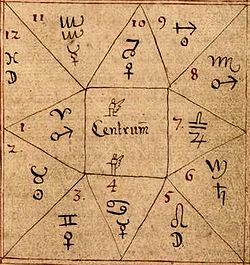
The Astrological Houses
Firstly, since there are a number of different house systems – click HERE for more detail on this – which should you choose?
Secondly, to a varying degree depending on your chart, planets can move house. In my chart, for instance, by Equal House I have no less than SIX planets in the Twelfth House. When I first saw my horoscope in Placidus houses, one planet, my ruler Mercury, had migrated to the Eleventh. O joy! I need all the help I can get here, I thought then. But, as you will soon see, it’s not as simple as that…
Then there is a further problem. In Placidus, the MC/IC axis always defines the cusp of the Tenth/ Fourth Houses. If you use Equal House, the MC/IC axis can fall through any pair of houses from the 8th/2nd to the 11th/5th. How do you deal with that?
To read the rest of this post, click HERE
******
©Anne Whitaker 2024
May 15, 2024
Astrology: art, science, belief system – or what?
In her 2014 book “Cosmos, Chaosmos and Astrology”, a rethinking of the nature of astrology, Dr Bernadette Brady makes the following point:
‘…the real result of …eighty years of research into the possibility of astrology being a science is the evidence that it is not…’ (p 69)
Well – what is it then?
In this wide-ranging discussion, Victor Olliver and Anne Whitaker discuss that very question with fellow astrologer, Ana Isabel.
100 words ©Anne Whitaker /Victor Olliver/Ana Isabel
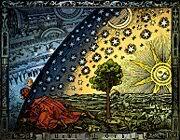
******
May 8, 2024
Scotland’s Horoscope: on the 25th Anniversary of its own Parliament – and a new First Minister.

The first thing to strike the eye is the powerful emphasis on fire, with Leo rising , Aries MC, and both rulers in Aries in the tenth house. Mercury Venus conjuncts the MC from the Ninth House. This conjures up a picture of an exuberant, creative and confident nation not wishing to keep its talents to itself but launching them (in the shape of its people) out into the wider world.
Scots are to be found everywhere, and every modern Scot has relatives in Canada, America and Australia in particular. Some of the world’s most famous explorers were Scots, David Livingstone and Alexander MacKenzie, who named the MacKenzie river in Canada, being two examples.
Uranus, ruler of the Aquarian Descendant, is placed in the Ninth House in a watery grand trine with Saturn and Pluto. This conjures up a powerful image of strongly inventive and imaginative abilities which can structure the natural forces of nature in innovative ways: James Watt whose steam condenser leading to the steam engine drove the Industrial Revolution, and John Logie Baird who invented television, come immediately to mind.
Uranus’ conjunction with Mercury, Venus, the MC and trine the Leo Ascendant combines restless travelling with innovative writing and artistic expression: Robert Louis Stevenson and Charles Rennie Mackintosh, neither of whom ended their days in their native land, but both of whom exerted powerful influence as writers and artists, fit this pattern well.
Overall, Scotland is a country which has contributed to the positive dimensions of human endeavour quite out of proportion to its small size.
Inevitably, there is a darker side to this bright picture, as with any nation. Saturn rising in Cancer in the Twelfth House is the powerful starting place from which to explore the painful side of Scotland’s complex sense of national identity. That identity under threat from an oppressive aggressor nation is a strong picture which arises from the square between the Twelfth House Saturn in Cancer, and Mars in Aries in the Tenth.
There are many examples of this oppression by England over the thousand years since Malcolm was crowned at Scone. Memories of the brutal putting down of the 1745 rebellion against English rule, the infamous Massacre of Glencoe and the suppression of the Gaelic language which followed, and the Highland Clearances which forced thousands of Scots to emigrate in the eighteenth century, still fester in the national psyche.
Mars in Aries in the Tenth is exuberant, bold and adventurous; the square to Twelfth House Saturn in Cancer shows the undertone of rage and pain at being torn from one’s deepest roots which lies behind that bright spirit. Poverty and oppression in many cases were the driving forces behind the Scots’ wanderlust.
One of Scotland’s many paradoxes is that a great, and justified, sense of national pride seems to co-exist with angry feelings of resentment and a hidden inferiority complex; symbolically, this fits well with the square sitting behind Leo rising.
If you are in any doubt about this, try keeping company with Scots who are the worse for drink, particularily if the location is England! One of the most unattractive facets of contemporary Scotland seems to be the need to put down (with the exception of Sean Connery !) those who have done well, rather than praising them.
Scotland’s passionate and at times tortured relationship with the spirit at its different levels can also be seen from this chart. Look at the dominant grand cross involving the Cancer/Capricorn Nodal axis with Neptune, crossing the MC/IC axis T-square involving the prominent Sun and Venus.
This is a highly imaginative, spiritual, musical, passionate,cultured, artistic, adventurous, justice-seeking, visionary pattern in its bright face. It speaks of the many gifts this small nation has given to the wider world, and through which its own national life has been, and is, a rich experience for many of us who live here.
But its dark face is that of the maudlin drunk, abandoned by God, oppressed by England, singing exiles’ songs in some parochial bar, longing to return to the unchallenging safety of the womb/home – or failing that, the oblivion of alcohol.
******
The 1005 chart reflects well the momentous changes which were going on, as we moved towards electing the first Scottish parliament for nearly three hundred years on the 6th May 1999.
Prog Uranus at 4 degrees Aries is crossing natal Mercury and Venus (IC ruler) in the Ninth House, with prog Asc at 20 degrees Pisces close to natal Uranus, also in the Ninth. Prog Sun (Chart Ruler ) is conjunct Prog MC at 28 Sagittarius, both falling on the natal Part of Fortune – all indications of the radical nature of those changes, and the nation’s optimism and expansive spirit as it prepared for its first step towards self-government for nearly 300 years.
Transits reinforce this. As the time of the elections approached, Jupiter crossed all the Aries planets at the top of Scotland’s horoscope, as well as the MC.
During the whole period since the sweeping New Labour victory in May 1997 made a Scottish parliament a reality instead of a romantic nationalistic fantasy, transiting Pluto in Sagittarius opposed Scotland’s Jupiter in the 11th in Gemini, square the 2nd House Virgo Moon. Scotland’s Sun/Moon midpoint at 8 Gemini was also opposed by Pluto from Spring 98 until the end of 1999.
These were very appropriate significators for the debate centred around beliefs and values and the proper allocation of resources which had been going on; also, there is a death/rebirth process going on in Scotland’s ties with England and the UK. The outcome of that is by no means clear, many Scots wanting nothing less than the end of the long marriage with the UK.
_______________________________
DATA :
Scotland:
25 March 1005, Scone, Scotland, Noon (traditional symbolic time for the coronation of the king). Coronation of Malcolm Canmore, aka Malcolm the Second. Source/s: this date is given as the start of the year 1005 in the Annnals of Ulster, as quoted in Early Sources of Scottish History Volume 1, p 521, covering AD 500-1296. This work was collected and translated by Alan Orr Anderson (1879 -1958) and first published in 1922 by Oliver & Boyd (Edinburgh). A corrected edition was published by Paul Watkins in Edinburgh in 1990.
(note: the Horoscope in this article is set for Perth, a latitude and longitude so near Scone as to make no difference to the horoscope’s planetary positions, Ascendant or Midheaven – the computer hadn’t heard of Scone, apparently! And – the date changes to 31 March when calendar adjustments are made from the Julian to the Gregorian calendar)

Standing Stones at Calanais, Isle of Lewis: Scottish Icons
1300 words ©Anne Whitaker 2024
May 6, 2024
This book is the maverick self-taught astrologer’s dream!
More of that in a moment.
In the meantime…Well, another book is on the way, it seems…this time, as transiting Neptune squares my tenth house Mars/Uranus conjunction and Pluto begins a very long opposition to a twelfth house stellium of planets in Leo. Not to mention the 10th house progressed Moon in Gemini ( well, I just have!…). And Jupiter/Uranus squaring the twelfth house Sun… Not without trepidation, I appear to be returning to explore and describe what can best be described as a ‘night sea journey’: ie the long and very frightening opposition Neptune made to that Leo Stellium during his 1998- 2012 journey through Aquarius.
Here’s a taster:
‘…“One does not discover new lands without consenting to lose sight of the shore for a very long time…” Andre Gide (1)
That quotation occupied a prominent place in my kitchen for a very long time, from 2001-2012, to be exact. Especially during 2001-6, I needed all the inspiration I could get, having been pitched into what amounted to a frightening inner voyage of discovery with no landmarks, no map, no companions – and no idea if I would ever again reach dry land…’
Having grappled to write the Introduction over the last few weeks, I have been taking a pause over the first of two bank holiday weekends here in the UK. Any writers reading this post will know all too well that combination of excitement and apprehension accompanying the knowledge that, at last, after all the procrastinating, prevaricating and messing about – it’s ‘game on’.

So – it would be correct to say that I wasn’t giving much thought to my previous book, “Postcards to the Future…”. However, I had a lovely surprise when, somewhat groggily, I checked my astrology mailbox this morning. Having had the spring covid booster jab yesterday, I had barely been able to drag myself out of bed.
Michelle L (In her own words, ‘Maverick self-taught’ astrology student, purveyor of the general ‘off-piste’ & long-term learner in the arts of ‘patience’ and ‘surrender‘…) an enthusiastic astrology student who has been writing to me recently having bought several of my books, has written a delightful Amazon review of “Postcards…”
Here is an edited extract:
“…Her humour and conversational style are a treat … The whole book felt like an astro conversation that I didn’t want to end. …Anne describes some of the current cycles affecting her chart as placing her in an Elder role. I feel much gratitude for quite randomly coming across and benefiting from her ‘Elderhood’ and I can’t help feeling that perhaps due to Anne’s twelfth house Leo pile up that she is a ‘hidden great’. In short, reading ‘Postcards…’ is like absorbing 40 years of distilled astrological experience: I am certain that whilst these ‘mercurial musings’ date from 1995–2021, they will indeed serve as postcards to the future for generations of astrologers to come…”
Thank you so much Michelle, as well as for your feedback on ‘Wisps from the Dazzling Darkness’. It is both a humbling and an uplifting experience to know that one’s work continues to inform, entertain and inspire the upcoming generations of astro-enthusiasts.
And now – head down and on with that next book…

500 words ©Anne Whitaker 2024
April 27, 2024
Fate, Free Will – and working with psychological complexes in understanding family Fate…
I really enjoyed this conversation with Ana Isabel!
We delved into the depths of what the relationships are between psychological complexes, Fate, free will – and explored how working with the insights offered by in-depth psychological astrology – here, as practised and taught by Dr Liz Greene – can help us to make positive conscious choices in how we live our lives as constructively as possible.
Says Ana: “In this conversation with Anne Whitaker, we discuss how we can break free from generational complexes as we discuss Liz Greene’s book, The Horoscope In Manifestation.”
And – many thanks to The Wessex Astrologer for re-publishing those wonderful CPA books.
©Anne Whitaker/Ana Isabel 2024
April 19, 2024
Jupiter/Uranus conjunction this weekend: join the astrology-fest!
To mark this Fest, I thought I’d put together a list of ten quality in-depth posts, events and interviews by leading astrologers and organisations, compiled over the last few weeks as excitement and anticipation builds re what this new 14 year Jupiter/ Uranus cycle may bring.
Immerse yourselves – and when you surface, feel free to leave comments on your impressions and personal experiences of any dimension of this exciting, challenging, disturbing and liberating planetary conjunction as it continues with its ancient symbolic task of seeing no limits – challenging old frontiers and revealing startling new vistas of experience and discovery. As a human community, we have begun a new voyage into the Unknown. We are crossing new thresholds. Comfort and security are never key features of such voyages….

crossing new thresholds
********
Compilation©Anne Whitaker 2024
April 15, 2024
Talking About Astrology: Questions – and Answers…
We really had a good time at The Yoga Extension in Glasgow on 10th February 2024: I offered an open Questions and Answers session on Astrology – taking enquirers way beyond the popular Sun Signs – and was really impressed with the range and depth of the questions as well as with attendees open-minded attitudes.

The Big Why?
I told those present that I had had the typical astro-dismissers attitude ie willingness to rubbish a subject with a 6000 year old pedigree from a standpoint of little or no actual knowledge – until I encountered an astrologer in a launderette (in Bath, England, of all places!) who stunned me by later providing me with an accurate in-depth reading of my character and preoccupations, gifts and pains: despite knowing nothing about me.
He also predicted – correctly – that I would begin studying and practising astrology myself in about 7 years’ time. You can read the full story HERE if you wish.
This second Q and A session on 20.4.24 – again at The Yoga Extension, full details in pdf below – is for anyone with an open-minded interest in – but very little knowledge of – astrology beyond the highly popular but very limited ‘star sign’ version. In-depth astrology offers an ancient and highly complex model for analysing and making some sense of who we are, both collectively and individually, and why we do the things we do.
It’s a subject which has fascinated me for over 40 years – and still does! So – come along, ask any questions you may have eg “How does astrology make sense of twin differences?” or “What does the birth chart say about Fate v Free Will?” or “How far can (or should) astrology predict the future?” I’ve probably answered most of the questions people ask – but why don’t you turn up and ask me one I’ve never heard before?!
Also: I’m going to be setting up some Questions and Answers sessions over zoom which anyone with an open-minded, enquiring attitude to astrology – and perhaps a wish to find out how to study with reputable astrology schools – can sign up to attend. More details soon. If you wish to put your name on the waiting list, please email me at : info@anne-whitaker.com ( Sessions will be limited to 6-8 participants per session to enable us to communicate in person rather than via chatbox )
20.4.24-Talking-about-Astrology-FlierDownloadApril 9, 2024
Cheer up: solar eclipses aren’t all doom and gloom…
Total solar eclipses really get people going: the internet is currently awash with opinion and prediction as well as stunning images from the recent eclipse. This ranges from the pragmatism of pointing out that (as with all astro-events), the potential for shadow and light co-exists, to outright doom-mongering. This 19 Aries solar eclipse – which was exact at 18.21 GMT on 8th April 2024 – is no exception. Given its line up with the North Node, Chiron and Eris all in Aries at a time in the world which no-one could describe as peaceful and harmonious, one can understand why.
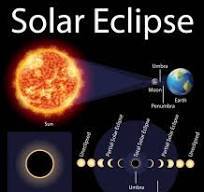
However, we have been here before with fear-inducing eclipses. I can clearly remember the last total solar eclipse of the millennium, falling on 11 August 1999. As I said in a piece I wrote then for Kindred Spirit magazine:
“…Predictions abounded, from the end of the world as we knew it, to Paris going up in flames. One year on, we are still here, along with the world as we know it, and Paris. But what happened as the big eclipse approached was very, very interesting. It showed that human beings at a deep level are still very much woven into the rhythms of Nature, and responsive to them, despite our increasing dependence on technology…” (i)
To read that piece, which discusses the Sun/Moon cycles as well as eclipses, and how to work with them, click on image below.
sunmoon-cycles-ksautumn-2000-2DownloadGoing back even further in time, I wrote a piece describing a remarkable experience I had when a solar eclipse at 8 degrees 18 Aries ( yes, an Aries eclipse, folks!!) opposed my 8 degrees 53 Libra natal Second House Neptune, which is closely sextile natal Mercury at 9 degrees 03 Leo in the Twelfth. Can you guess from this astro-shorthand what the nature of this experience was?
Click the link below to find out:
Cheer up: solar eclipses aren’t all doom and gloom…
Speaking for myself, there have certainly been some challenging things going on in recent days. But the Aries eclipse plus North Node and Chiron trining all my 12th House planets has seen me in dynamic mode, beginning a new book as well as clearing out lots of stuff from my home. It has indeed been painful seeing yet more of the long shared history with my late husband go: but we must face and go through endings in order to clear space for new energy to shape the next phase of our lives with all its promise of new possibilities.
Start where you are, do what you can, use what you have – and just get on with it. May you have a productive Spring!

450 words © Anne Whitaker 2024
April 5, 2024
Introducing Jupiter and Uranus conjunctions – through the broad brushstrokes of history…
Excitement is now building as we approach a major symbolic event in the astrological calendar: the most exciting, disruptive, dynamic planetary conjunction of the whole pantheon: the meeting of Jupiter and Uranus.
As we advance towards the conjunction on 21st April 2024, Jupiter/Uranus is now preparing to settle into a new 14-year cycle, continuing with its ancient symbolic task of seeing no limits as it challenges old frontiers and reveals startling new vistas of experience and discovery.
As a human community, we are beginning a new voyage into the Unknown. Comfort and security are never key features of such voyages….
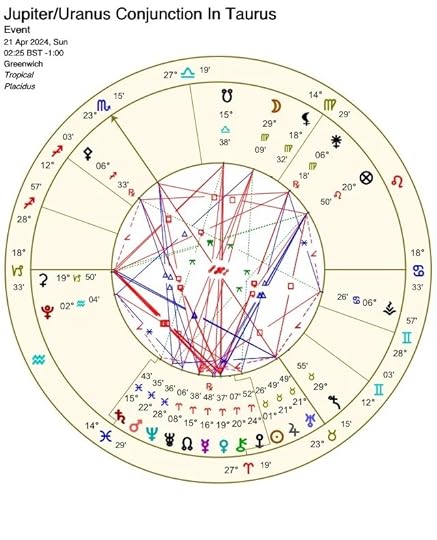
However, we cannot fully begin to understand anything or anyone without placing it or them in an appropriate context , both in the present moment and within an historical perspective. This is just as true for planetary meetings as for anything else. Some years ago, I did just that, introducing readers to the essential meaning and significance of the combination of Jupiter and Uranus. I then went on to explain why I thought the Jupiter/Uranus conjunction in Aquarius of 16th February 1997 held particular significance for humanity and indeed for the very planet on which we all depend, providing many startling examples both from collective and individual lives to support my case.
I also surveyed the pattern of Jupiter/Uranus conjunctions through 500-year blocks of history from 500 BCE to 2500 CE, and came up with what I believe to be – in very broad brushstroke format – some telling perspectives regarding the impact of human restless, innovative brilliance on our past, present – and future.
Over the next few posts as we advance towards the conjunction date of 21st April, I aim to share extracts from my e-book ‘Jupiter Meets Uranus’ to enable readers to place the upcoming conjunction in its context of both core meaning and broad history. Just follow the links, those of you who’d like to buy and read the whole book.
As my colleague Victor Olliver, well-known astrologer, editor of the UK’s world-renowned The Astrological Journal, and respected author said recently:
‘The Taurus Jupiter/Uranus conjunction is the major astrological event of 2024 – and Anne Whitaker’s e-book (and blog) Jupiter Meets Uranus is by far the most authoritative guide to its meaning and significance, based on her original research and driven by her customary rigour and straightforward approach. Though the alignment occurs in the latter half of April, it has a longish build up and a longish ‘wake’ whose effects are sure to be clear and measurable in the world. A must-read for a better understanding of astrology and our times.‘
EXTRACT 1:
Presenting Jupiter and Uranus
Jupiter and Uranus form a conjunction in the heavens every fourteen years. Why should the prospect of such a meeting generate excitement, and anticipation of ‘fresh woods and pastures new’? 1 Before going on to explore in detail what exciting happenings their encounter in 1997 did indeed bring, it would be useful to return to first principles by way of introduction. How did astrological Jupiter and Uranus acquire their individual names and meanings? Why are their energies in combination regarded as being so dynamic, unusual, disruptive?
Background: Names and Meanings
When a child is born, the first thing we do is give him or her a name. The surname, coming from the father’s side of the family within traditional Western practice in earlier times than ours usually had some links with the family’s place in society, e.g., through occupation; Smith or Mason were linked with trades followed by the family stretching back generations. The child is thus placed in context.
Then observation gradually builds up a picture of how s/he generally behaves in response to a range of circumstances. By adulthood, that person is recognised in essence as being, for example, a cheerful, optimistic and expansive type, or a steady, dependable and well-organised type, or an unpredictable maverick, exciting to be around, but rather alarming in that you never quite know what s/he will do next.
Similarly, the planets as they appeared to humankind’s view very early in our history were given names, depending on the culture from which they were being observed. For example, the evening star was called Inanna by the Sumerians, Ishtar by the Egyptians, and Venus by the Romans. She was assigned the role of beautiful, powerful queen of the heavens in the myths of all three cultures, reflective perhaps of the observed dominance, brilliance and beauty of that planet in the evening sky at certain times of the year.
Our names and sexes for the planetary pantheon came from the Greek and Roman classical culture on which our Western civilisation is based. Within that context, the names of the planets were linked to gods and goddesses. Furthermore, their observable physical appearance and position initially lent weight to the choice of their names, and may in fact have led to it.
Jupiter is the largest and most brilliant planet, its mass from astronomical observation two and a half times greater than the rest of the planets combined. It was given the name of the king of the gods in Roman mythology, Zeus being the Greek equivalent. Over time, a whole range of mythical stories about the larger-than-life behaviour of this god came to be associated with the symbolism of astrological Jupiter.
Saturn was given its name from the logical premise that it was the next planet out from Jupiter; Saturn was Jupiter’s father in Roman mythology, Kronos being his Greek counterpart. From an astronomical point of view, Saturn was the farthest out and last planet visible to the naked eye. Defining the boundaries of the solar system in the ancient world, it was the ring-pass-not. Its physical location as the definer of limits and its place in both Roman and Greek myth as the stern old king, dispenser of strict justice, came to define its astrological meaning.
An Orderly System
Until the appearance of Uranus in 1781, the symbolic world of Western astrology was well ordered. The backdrop was the tropical zodiac, measured in a 360o great circle in the heavens from the first point of Aries. There were twelve signs, and seven planets. The Sun and Moon ruled a sign each, and the other five ruled two signs each. Very tidy.
There was also a long tradition of observation of the relationship between planetary alignments and human affairs. In Arthur Koestler’s memorable words: “Six thousand years ago, when the human mind was still half asleep, Chaldean priests were standing on their watch towers, scanning the stars.”2
Once planets have been named and placed in context, there is then unending work to do in empirical observation, which continues to enhance and reinforce the base upon which our tradition rests. As Richard Tarnas so elegantly puts it: “It is astrology’s extraordinary insight that these complex, multidimensional archetypes which govern the forms of human experience are intelligibly connected with the planets and their movements in the heavens, an association that is observable in a constant coincidence between specific planetary alignments and specific corresponding archetypal phenomena in human affairs.”3
To sum up: planets’ symbolic meanings have been derived over time from the astronomy of the planet which is linked to the name, from the mythology associated with the name of the relevant god or goddess, and from empirical observation of the links between planets’ movements by transit and corresponding manifestations at an individual and collective level of earthly life.
Jupiter
Thus, from a weave of the above factors, astrological Jupiter came to be known as “the great benefic,” the planet bringing opportunity, personal wealth, political prominence, high social position, professional success—“kingship” of various kinds as befitted mythological Jupiter’s role as king of the Olympian gods. As Charles Harvey puts it in Orpheus: “He was seen as the greatest good and his blessings were everywhere invoked. No one can doubt that his message of life, vitality, hope, growth, optimism, faith and the call to meaning are profoundly desirable.”4
Psychologically, all forms of over-confidence, inflated sense of one’s own importance, arrogance and hubris were assigned also to the realm of Jupiter. These represent the shadow side of Jupiter’s undoubted blessings of robust faith in life’s essential value and goodness, the longing to know and to grow in wisdom, and the ability to have fun and inspire other people.
Just as Jupiter the mythical king in Roman myth was the law giver, so Jupiter the planetary symbol came to relate to those laws, principles, perspectives and ethics which set a context for a larger vision of life than one would have without the prompting of this powerful, fiery force of nature. In its shadow face, those dimensions become distorted into that within human nature which imagines itself to be above the law, able to annexe God to its own side, always able to justify action no matter how dire and inhumane.
The restless drive to grow, to expand, to live a life rich in meaning, to push the boundaries of knowledge and experience as far as possible, lies at the core of astrological Jupiter. So does its shadow; restlessness which cannot and will not accept the limits set by age and time, the domain of Saturn. This can produce, for example, the kind of contemporary narcissism which has people in their fifties and beyond becoming undignified caricatures of their younger selves, shored up by plastic surgery and excesses of exercise and dieting.
All excess belongs to Jupiter’s realm, summed up in William Blake’s marvellous line: “The road of excess leads to the palace of wisdom.”5 Blake was clearly an optimist, when one considers the evidence both of history and contemporary life.
Uranus
Uranus appeared in 1781, seriously upsetting the orderly cosmic structure upon which astrology was predicated. William Herschel had not expected his exhaustive telescopic sweep of the heavens to yield another planet, but it did: the first to be discovered since prehistoric peoples began to scan the heavens. Various names were considered, and at first it was called Herschel after its discoverer. The name finally settled for from Roman myth was Uranus, following the same mythologic which had named Jupiter, then Saturn. Roman Uranus (Ouranos in Greek myth) was the father of Saturn/Kronos, corresponding to the new planet’s location beyond Saturn’s orbit. Perhaps the astronomy influencing the choice of name was that Uranus was now the farthest out planet. As such, it existed beyond the limits of temporal existence set by Saturn, taking us beyond the World to the realms of the starry heavens, ruled by Uranus/Ouranos in classical myth.
Divergence and Contradiction
Astrologers also adopted Uranus as the new name, but there is just one problem. Empirical observation, as already noted, is the third strand in the weave of confirming a planet’s symbolic meaning. However, as Richard Tarnas points out in his masterly essay, “Prometheus the Awakener,”6 there is a consensus among modern astrologers based on empirical observation since its discovery, regarding the core principles associated with the planet Uranus. However, the mythical figure most clearly evoked by those principles is not Uranus/Ouranos!
What are those core principles? Here I quote from Tarnas: “The clear consensus . . . is that the planet Uranus is empirically associated with the principle of change, rebellion, freedom, liberation, reform and revolution, and the unexpected break-up of structures; with excitement, sudden surprises, lightning-like flashes of insight, revelations and awakenings; and with intellectual brilliance, invention, creativity, originality, and individualism. In addition to the occurrence of sudden breakthroughs and liberating events, Uranus transits are linked to unpredictable and disruptive changes. . . . Uranus is regarded as signifying the individualist, the genius, and the rebel.”7
Tarnas points out that these observed qualities bear little resemblance to the mythic Uranus/Ouranos, there being nothing in his character to suggest rebellion, genius or the impulse for change. The schema of his myth is very different. The primordial god of the heavens as found in many mythologies, Ouranos’ relationship to Gaia, the Earth goddess, is a significant part of the Greek creation myth; but Ouranos, far from triggering change, resists it. Indeed, his progeny rebel against him and he is overthrown.
Astrological Uranus on the other hand is the very spirit of the opposite: it represents par excellence the rebel, the overthrower of systems. As Tarnas says, “. . . the mythological Ouranos not only diverges from but contradicts the meaning of the astrological Uranus.”8
It would seem from this that the logic which allocated to the new planet the name of the next god in the mythical pantheon, broke down when this particular planet’s behaviour was subjected to empirical observation. It seems rather apt, given its reputation for contrariness, that the planet should be Uranus!
Which mythic figure best expresses the core principles manifested by astrological Uranus? Tarnas links the planet clearly with Prometheus, a towering, unforgettable character from Greek myth. Prometheus was a Titan, descended from Ouranos, who rebelled against the gods, helped to overthrow the despot Kronos, tricked Zeus, and stole the divine fire of ultimate knowledge from Olympus in order to liberate humanity from the power and domination of the gods. I broadly agree with his observations, and would urge the reader to obtain ‘Prometheus the Awakener’, in order to give detailed consideration to the compelling case Richard Tarnas makes for assigning the Greek Prometheus myth to astrological Uranus.
Astrological Jupiter and Uranus Together – the Dream Team?
A first reaction to the combination of those two dynamic energies, fire and air, rulers of Sagittarius and Aquarius, tends to be positive and enthusiastic. Exploration and innovation, the quest for meaning allied with the drive for revolutionary change, are attractive facets of the human journey. What harm could come from them?
We certainly need the enthusiasm and exuberance of fire, and air’s spirit of enquiry. We need fun, adventure, learning, information and dialogue: life without them would be desperately dull and stagnant. But deeper investigation can lead to a degree of disquiet! Again, reflecting on the Greek mythology of Ouranos, Zeus and Prometheus can help to build a picture which has dark as well as bright shading.
The Mythic Picture
Ouranos, the starry heavens, was the divine progenitor of both Zeus and Prometheus. On the one hand this suggests the overarching urge for connection with the Big Picture which is a major backdrop to the action of Jupiter-Uranus aspects in astrology. There beckons the potential for the whole of creation to be revealed from a Divine source. All of existence is there for us to tap into, can we but find the tools to access it, and the optimism and positivity of spirit which goes with it.
On the other hand, Ouranos fathers many children on the earth goddess Gaia, and rejects them all. He finds them repulsive because, having taken on their mother’s earthiness, they are not perfect. In TS Eliot’s wise words: “Between the idea and the reality… falls the Shadow.”9
Zeus and Prometheus also make for an uneasy partnership. Prometheus created humans from clay. Athene, goddess of wisdom, was so charmed on seeing these little figures that she breathed life into them. Prometheus, wanting the best for his creations, wished to teach them all-knowledge. So he stole the gods’ divine fire and gave it to humanity for their benefit behind Zeus’ back.
Prometheus had been Zeus’ ally in the Titans’ uprising against Zeus’ father Kronos. But Zeus had a short memory for a favour, and showed no mercy towards Prometheus when the theft was discovered. He had him chained to a rock for eternity whilst a griffin pecked out his liver each night. Zeus’ harsh behaviour showed him to be more interested in maintaining his superior position, than in sharing what the gods had for the benefit of both gods and humankind.
Prometheus at first glance appears the more enlightened and progressive of the two. Yet he displayed considerable arrogance in deciding what would benefit humanity without, presumably, consulting a few of their representatives to see what the general feeling was! In concentrating on what humanity could become, he was too far up in the airy realms of theory to think of what the repercussions of human beings having godlike powers might be. Compassion for the impact of mind-expanding theories on the lives of ordinary individual mortals was no concern of his.
There are other rather unsavoury aspects to Zeus and Prometheus which it is well to bear in mind. Zeus, king of the Olympian gods, from his wisdom concerning basic truths about life set out laws and rules of conduct for humanity to follow. He was all too willing, though, to flout the laws pertaining to fairness, truth, decency and compassion for individual rights when it came to the pursuit of his own pleasures, a major one being the pursuit of women other than his long-suffering wife Hera. The saying, “Do as I say, not as I do,” probably originates here!
Being a king, presumably he felt that the laws governing ordinary mortals did not apply in his case, and that he was right in whatever he decided was the law. This type of approach to morality has given us amongst other human evils, the concentration camps.
Furthermore, Prometheus was so keen to expand humanity’s vision, with consequences we have already touched on, that he stole the Olympian fire behind Zeus’ back. The gift was already tainted by the way it was obtained.
To put it bluntly, the mythology shows us that we are in the company of two archetypal figures who between them have a sweeping and bright vision of how humanity should conduct itself and what it can achieve. At the same time, however, they are pre pared to be ideologues, hypocrites and thieves who can be motivated by greed and opportunism as well as idealism in the pursuit of their vision.
A Personal Note
It is as well for those of us possessed of that wonderful blend of energetic drives and gifts symbolised by astrological Jupiter and Uranus, also to look long and hard at the dark shadow which falls in its wake. Self-awareness and self-honesty do not change the equivocal nature of the gift; but they do bring the option of exercising moral restraint regarding the more unsavoury facets of the combination!
Bright Face in Summary
Together, astrological Jupiter and Uranus symbolise the best aspects of the human quest to become most fully “what we may be.” 10 They can bring faith, courage and an exploratory expansive spirit to the service of breaking down limited or partial vision, in order to reveal avenues towards which to direct the urge to create new forms for the ultimate benefit of humanity. They are productive of fun, joy, and a vital sense of connection with life as a meaningful and worthwhile experience. They carry with them ingenuity, creativity, imagination, and the ability to leap off the cliff like the Fool in the Tarot, trusting to life to bring them safely to land in new and exciting territory.
We need all of the above as core “boldly going” masculine components of living; without them we would stagnate, go nowhere.
Dark Face in Summary
But their combination can also produce dogmatic conviction of the rightness of their vision. This, as the driving force in challenging outmoded structures, can lead to the breaking down of old ways of organising human life without regard for the consequences. They can also jointly manifest a restless drive towards innovation or revolutionary change, which cannot leave things alone which may be working perfectly well just as they are. They can also operate together with hubristic arrogance, usually with destructive consequences.
The restraining but humanising facets of life are represented symbolically by earth and water. Those elements describe that “yin” consciousness which respects the body, the feelings, and the wisdom inherent in the great cycles of nature. Representing the forces which limit and contain human life, they offer a major challenge to the dynamic fire and air of astrological Jupiter combined with Uranus, whose symbolic function in enabling evolution is to see no limits.
Light and Shadow: Current Times
In the West at least, we have all benefitted from advances made possible by the restless brilliance of the human mind and spirit, that precious gift of divine fire symbolised in myth. The rapid development of our scientific and technological knowledge and expertise from the scientific revolution of the 17th century onwards has been particularly stunning. Interestingly, these advances greatly escalated from the appearance to our view of the planet named Uranus in the revolutionary decade of the 1780s, during a time known in Europe as the Enlightenment.
But the shadow side of that gift is becoming increasingly evident as our Earth becomes more and more obviously damaged by our drive to better ourselves. Further dangers now loom as our expertise in genetic engineering and cloning technology grows. We are increasingly able to take apart the very fabric of life, and weave it to a highly conjectural new pattern unknowable in its ultimate results.
There is also, always, the suspicion that lurking behind the stated laudable aims of using our rapidly advancing knowledge to improve the health and well-being of humanity, lies that ancient motivating force of mankind: greed and the drive for profit, the province of the shadow side of Jupiter. The fact that genes are being patented for commercial use as rapidly as they are being deciphered, tends to validate that suspicion.
Encore Prometheus
In concluding this section it seems appropriate once more to call forth the image of Prometheus, holding up the stolen fire of the gods.
That fire has surely illuminated our way as human beings. Since the end of the 18th century, we have been on an accelerated voyage of scientific and technological discovery which could not even have been dreamed of by our Neolithic ancestors. Their early scanning of the heavens represented humans’ very first attempts to gain some kind of control over Nature which to them must have seemed a savage and capricious force. Reality and myth entwine when we realise that it was their discovery of fire that led us out of dank caves, and eventually into the brave new world we now inhabit.
We have to be very careful, as the new millennium dawns, not to be so carried away by promethean hubris that we forget a vital fact. Nature created us, and will always be more powerful than we are. If we try to change Nature too much, it may well overthrow us.
As we will see from the examples provided from 1500 to 2000 AD, the Jupiter-Uranus planetary duo has been very much present at peak points in the never ending process of human development and discovery. However, when astrological Jupiter and Uranus meet, amidst their wonderful capacity for generating brilliance, joy in living, and the sheer excitement of challenging the established order to bring in that which is radical and new, they tend to forget something rather important.
The gods’ fire was stolen, not earned; ultimately it burns the hand that bears it. There is a price that humanity must pay for breaking through the limits set by Nature. We do not yet know how high it will prove to be; or, most importantly, whether it will be worth paying.
Endnotes
1.John Milton’s Lycidas (1638), line 192.
2.Arthur Koestler, The Sleepwalkers, Penguin Books, 1964, p. 20.
3.Richard Tarnas, Prometheus the Awakener, Auriel Press Oxford, 1993, p. 8.
4. Charles Harvey, from “War of the Worlds: Jupiter & Saturn,” Orpheus—Voices in Contemporary Astrology, Consider, 2000, pp. 103-4.
5. William Blake, from “Proverbs of Hell,” The Marriage of Heaven and Hell (1790-93).
6.Prometheus the Awakener, Auriel Press Oxford, 1993.
7.Prometheus the Awakener, Auriel Press Oxford, 1993, p. 11.
8. Ibid, p.11.
9.T.S. Eliot, The Hollow Men, 1925.
10.William Shakespeare, The Tragedy of Hamlet, Prince of Denmark, activ, scene v, “Lord we know what we are, but know not what we may be.”
If you’d like to purchase this e-book, which costs $10 via PayPal , and have a look at my other books which may also be of interest, click HERE:
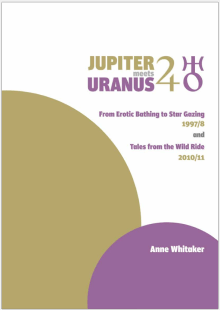
4,000 words ©Anne Whitaker 2009, 2014, 2024



